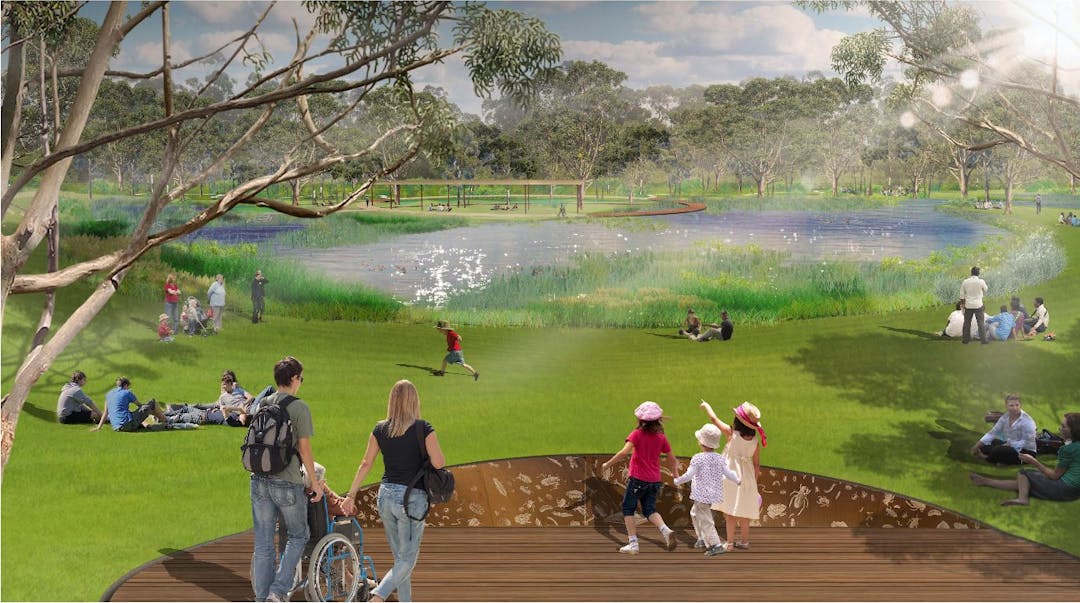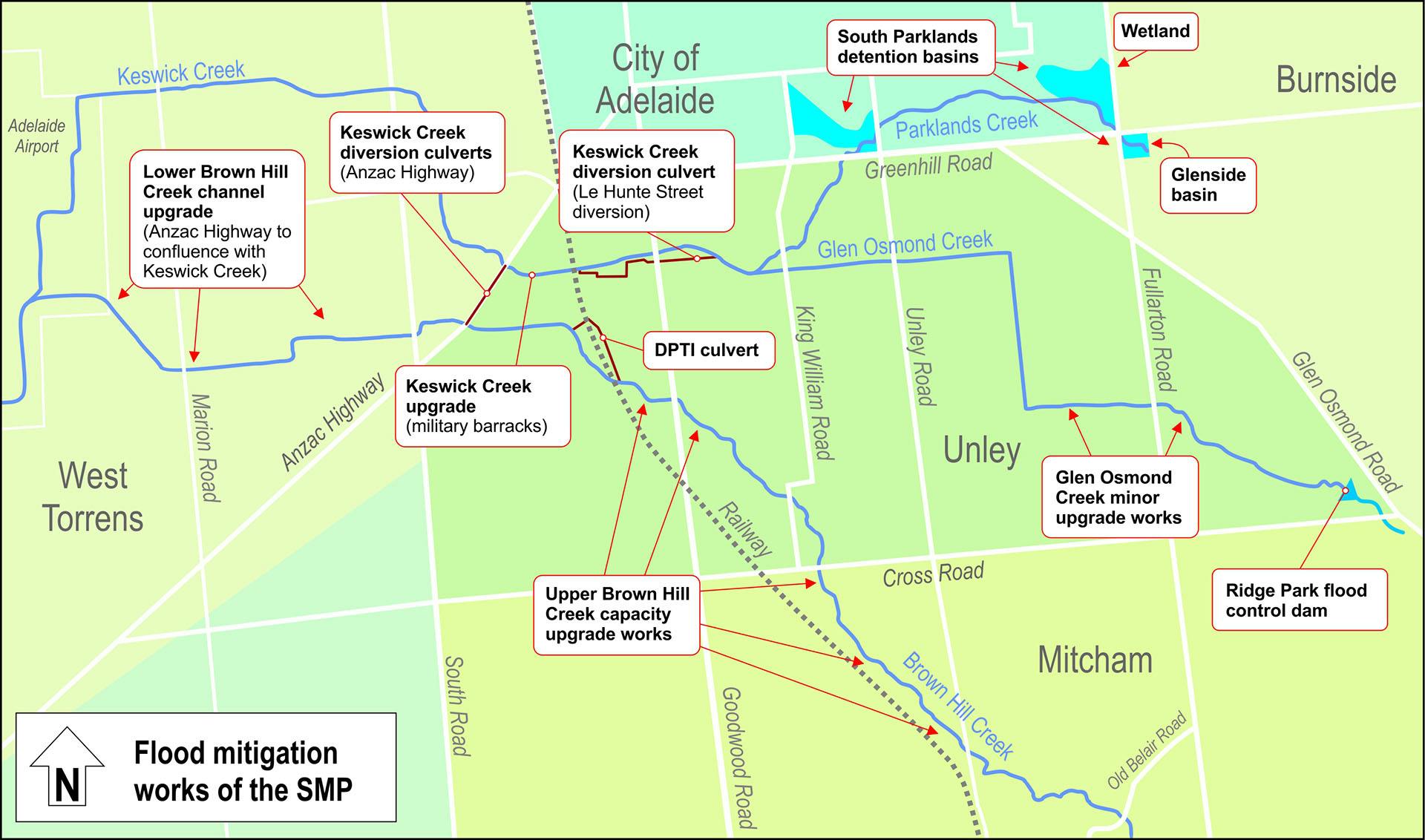Brown Hill Keswick Creek Stormwater Project
Consultation has concluded.

Artist Impression - Proposed wetland in Victoria Park/ Pakapakanthi (Park 16)
UPDATE - May 2022
The Pakapakanthi Wetland was officially opened to the public following a ceremony on 6 May 2022. Read the media release by clicking here.
The works in Victoria Park/Pakapakanthi (Park 16) involved constructing a wetland at the southern end of Victoria Park. In addition to aiding the management of flooding in Park Lands Creek and downstream residential areas, the wetland will deliver a range of benefits including improving water quality, enhancing the biodiversity of the area and creating amenity for park users, such as spaces to picnic, rest and to watch sport. For further information, please visit the Brown Hill Keswick Creek Stormwater Project - South Park Lands by clicking here.
Background
Brown Hill, Keswick, Glen Osmond and Park Lands Creeks are important drainage watercourses in metropolitan Adelaide. The creeks have a history of flooding and a low standard of flood protection, and therefore a relatively high flood risk. Their combined catchment is mainly contained within the local government areas of Adelaide, Burnside, Mitcham, Unley and West Torrens which are home to more than 200,000 residents.
The Brown Hill Keswick Creek Stormwater Project is a collaborative undertaking between the catchment councils to develop and implement a Stormwater Management Plan (SMP) to mitigate serious flood risks and help safeguard properties across the catchment.
Project Information
As part of the broader strategy to manage stormwater throughout the catchment and mitigate significant flood risks, the Brown Hill Keswick Creek Stormwater Project is seeking to:
- construct a wetland at the southern end of Victoria Park/ Pakapakanthi (Park 16)
- undertake channel works and create low level mounding in Blue Gum Park/ Kurangga (Park 20)
To assist in finalising the design work for both of these initiatives the project engaged with stakeholders and the community in mid 2019.
The South Park Lands project works, which began in mid 2020, are outlined in Section 10.2 of the 2016 Stormwater Management Plan.
For further information about the proposed wetland and its design view the Victoria Park/ Pakapakanthi (Park 16) Information Brochure.
For further information about the proposed channel works and low level mounding, view the Blue Gum Park/ Kurangga (Park 20) Information Brochure.
 | |||
| BHKC Stormwater Project website | Map of BHKC catchment & council boundaries | BHKC Latest News | Contact staff |





